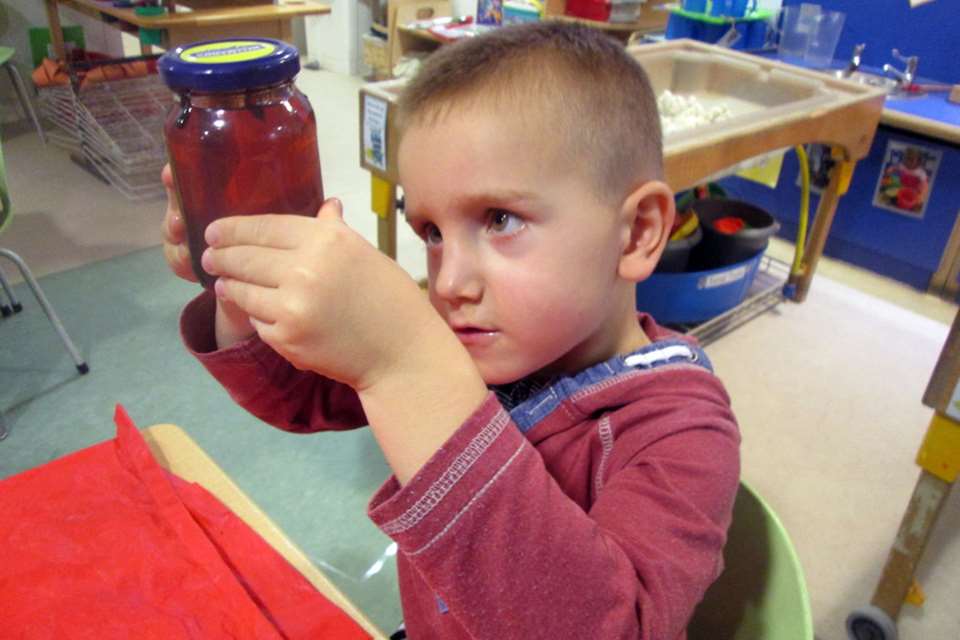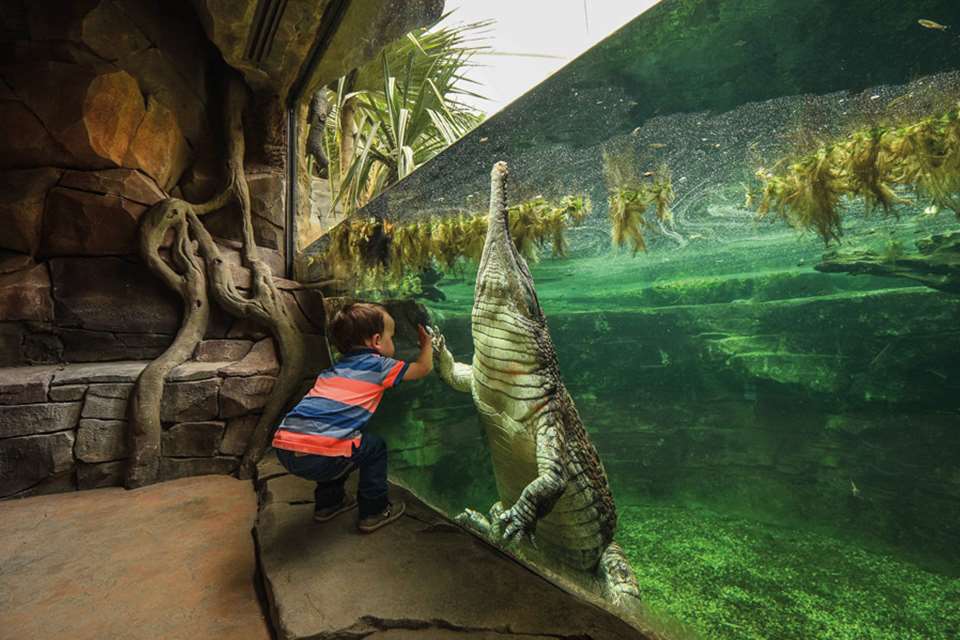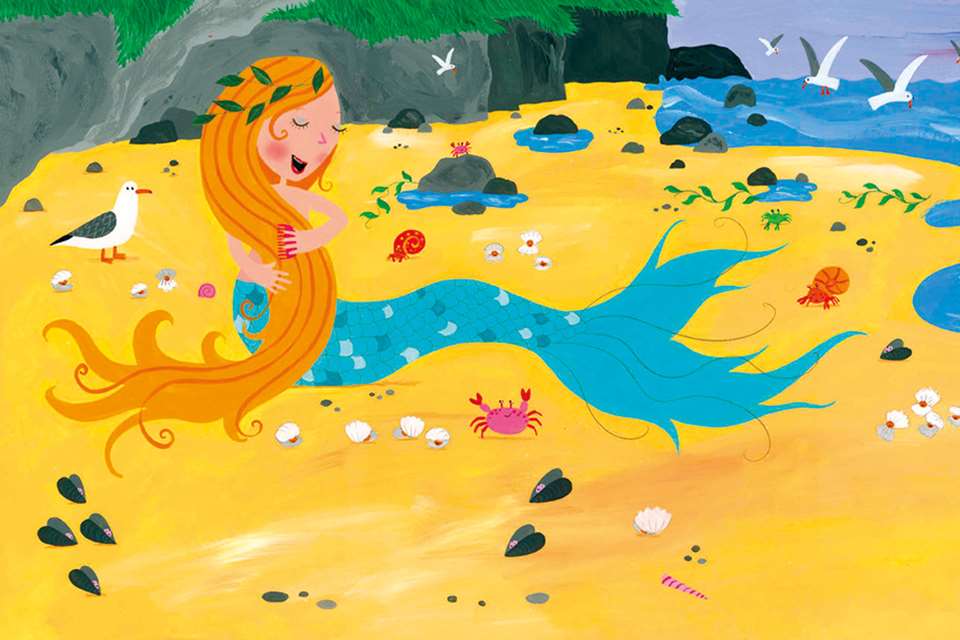EYFS Activities: We’ve explored… dots
Annette Rawstrone
Monday, January 23, 2017
Story The Dot has inspired children in Burnley to become little artists, writes Annette Rawstrone
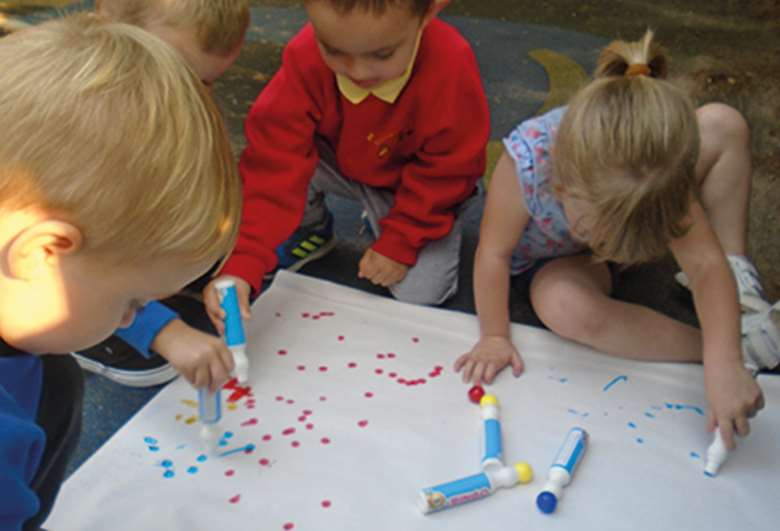
It’s all gone dotty at Rosegrove Nursery School in Burnley, Lancashire. The children and staff have had spots before their eyes as they have explored dots and spots through investigating different artists, mark-making, experiments and even wearing spotty clothes, all inspired by reading The Dot by Peter H Reynolds.
In the story, Vashti is a girl who believes she can’t draw. Her teacher suggests that she ‘make a mark and see where it takes you’. This is the start of her drawing elaborate, colourful dots and realising she is indeed an artist. The book was also the starting point for staff, encouraged by a workshop run by consultant Shonette Bason Wood, to encourage more of the children to start mark-making, and set everyone off on a dotty adventure.
‘We read the story to all the children in small groups and collected a range of circular resources and materials for them to explore afterwards,’ says early years teacher Jenny Metcalfe. ‘In the two-year-olds’ room, some children enjoyed using circular-shaped cutters with playdough or, like in the story, made dots on paper with felt-tip pens, pencils and by finger-painting. Others sorted a range of circular objects and were absorbed filling up circular baskets and transporting them.’
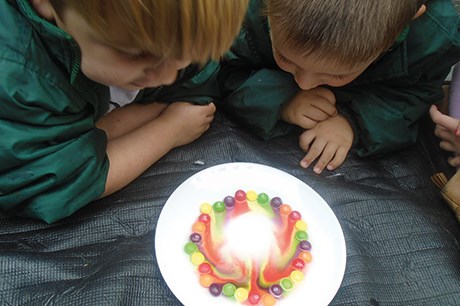
Staff observed the two-year-olds’ interests and discussed where to extend their explorations. Staff collected circular objects for the children to use for printing and modelled how to use them. Children used them to make their own dotty pictures and it was observed that they were particularly drawn to using bold primary colours when painting. Like Vashti in the story – who mixes a blue dot with yellow to make a green dot – the children started to explore colour-mixing.
Vashti enjoys painting dots so much that she begins to use bigger paper so that she can create bigger dots. To emulate this, staff put large rolls of paper outside for the children to use for mark-making. ‘We noted that the children loved working on a larger scale and printing with sponges on rolls of paper outdoors. We decided to encourage this further by providing different media such as gloop and shaving foam to encourage their gross motor skills as they made large circular arm movements and swirled it around,’ says Ms Metcalfe. ‘We introduced scarves outdoors and children used them to dance, making big circular swirling motions with them.’
ROUND IN CIRCLES
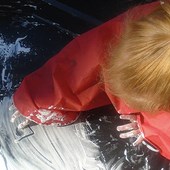 After reading The Dot to the three- and four-year-olds, staff enhanced the mark-making area with a range of new resources such as bingo dabber pens, circular objects for printing, circular-shaped paper and spotty stickers combined with the usual felt-tip pens and paints. The children were excited by the range of materials and experimented with them. Some concentrated on dots, while others started to turn them into spirals and lines.
After reading The Dot to the three- and four-year-olds, staff enhanced the mark-making area with a range of new resources such as bingo dabber pens, circular objects for printing, circular-shaped paper and spotty stickers combined with the usual felt-tip pens and paints. The children were excited by the range of materials and experimented with them. Some concentrated on dots, while others started to turn them into spirals and lines.
‘The children used the dots as the basis for their pictures and it was interesting to see the different directions that it took them,’ says Ms Metcalfe. ‘Dots were incorporated into some of the pictures, for example using the dotty stickers for the eyes of a person or on an animal. We held a staff meeting to discuss the children’s work and how we could extend their learning.
‘We decided to introduce the children to different types of artwork that uses dots, such as the dot paintings done by some Aboriginal artists where images are depicted by small dots of paint colours, and the Russian painter Wassily Kandinsky, famed for his abstract paintings of circles. We gathered examples of these pictures to show and discuss with the children and use as provocations to inspire them to try to make their own.’
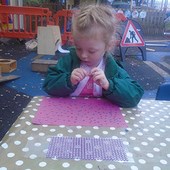 Instead of using paint brushes, children used cotton wool buds dipped in paint to carefully create their own Aboriginal art. Staff also put circles of different coloured paper in the art area for the children to layer and build up their own layered circle pictures and patterns to imitate Kandinsky. Through studying the ‘dotty’ artwork, the three- and four-year-olds started to discuss the vibrant colours that were being used and were interested to look at different artists’ use of colour.
Instead of using paint brushes, children used cotton wool buds dipped in paint to carefully create their own Aboriginal art. Staff also put circles of different coloured paper in the art area for the children to layer and build up their own layered circle pictures and patterns to imitate Kandinsky. Through studying the ‘dotty’ artwork, the three- and four-year-olds started to discuss the vibrant colours that were being used and were interested to look at different artists’ use of colour.
‘To give the dot project a science element linked with the children’s interest in colour, we set up an experiment with Skittle sweets placed in a circle around the plate. We asked the children to think about what would happen when we poured warm water on the sweets to encourage their problem-solving,’ says Ms Metcalfe. ‘Children predicted they would zoom off like fireworks, disappear or go into the trees. They were amazed to see all the colour come off and run into the middle to create a rainbow-like pattern.’
By taking their mark-making outside, the older children were also able to work on a larger scale. They enjoyed dipping balls in paint and rolling them down a ramp to see what patterns they’d make on paper at the bottom. Children extended this investigation by also dipping toy cars in paint and looking at the different marks made by the wheels.
IN THE FRAME
Enthused by their explorations with dots, the staff and children decided to invite parents to the setting for a stay-and-play session so they could join in the dot-related activities – including going on a shape hunt around the nursery looking for circular objects – and see for themselves what their children had been investigating and the artwork they’d been producing. The following day they planned a ‘Dot Day’ to celebrate the project and hold an art show, like in the book.
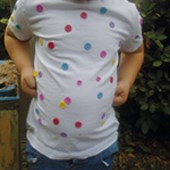 ‘Parents really supported the idea and some even made spotty clothes with their children to wear on the day by sewing on different coloured round buttons and pom-poms,’ says Ms Metcalfe. ‘In The Dot, Vashti’s teacher frames her artwork and hangs it on the wall, which inspired Vashti to do even more artwork. We took this idea and made frames to put the children’s artwork in. The children loved this and they could see that their pictures were valued. It’s something that we’ll definitely continue doing in the nursery.’
‘Parents really supported the idea and some even made spotty clothes with their children to wear on the day by sewing on different coloured round buttons and pom-poms,’ says Ms Metcalfe. ‘In The Dot, Vashti’s teacher frames her artwork and hangs it on the wall, which inspired Vashti to do even more artwork. We took this idea and made frames to put the children’s artwork in. The children loved this and they could see that their pictures were valued. It’s something that we’ll definitely continue doing in the nursery.’
Since the Dot Day, children have continued to revisit the dot theme in their mark-making. Staff are thinking of bringing in an ICT element to the project by creating dotty pictures on the computer and iPad. They also plan to extend the children’s interest in different artists and use of colour by showing the children examples of Piet Mondrian’s work, the Dutch painter renowned for designing grid-based paintings filled with primary colours.
‘We’re amazed by how one story has inspired us to do so much,’ says Ms Metcalfe. ‘We felt that it may be a hard story for some of the children to understand, but they really grasped it and were motivated by it. It was nice to all work together on a project, to share our ideas and see where it would take us, and it was a great way to encourage the children’s mark-making.
‘Dots is quite a simple idea that children can access at their own level, regardless of age. We feel that the children gained a great sense of achievement through the explorations and the work that they created.’
MORE INFORMATION
Shonette Bason Wood, http://spreadthehappiness.co.uk
BOOK CORNER
 The Dot by Peter H Reynolds
The Dot by Peter H Reynolds
A story of self-expression and creativity. Vashti thinks she can’t draw, but her teacher is sure that she can. She knows there’s creative spirit in everyone and encourages Vashti to sign the angry dot that she makes in frustration on a piece of paper. This act makes Vashti look at herself a little differently.
 I Am Henry Finch by Alexis Deacon and Viviane Schwarz
I Am Henry Finch by Alexis Deacon and Viviane Schwarz
This enlightening story about courage and making a difference is simply and stylishly illustrated and features a bird made from a finger print. It is the uplifting story of Henry Finch the loveable little bird who strives for greatness, gets it all a bit wrong, then makes it right again in a very surprising way – truly becoming great. It’s an inspirational and funny book that introduces children to philosophy.
Beautiful Oops! by Barney Salzberg
An increasingly complex series of scenarios celebrates random accidents, encouraging artistic experimentation rather than discouragement. The folded-over paper can be a penguin’s head; a torn piece of newsprint a smiling dog; a hot-chocolate stain can become a bog for a frog. It’s a book showing the endless possibilities that can come from a simple mistake.
 My Mum and Dad Make Me Laugh by Nick Sharratt
My Mum and Dad Make Me Laugh by Nick Sharratt
Mum is crazy about spots – spotty clothes, spotty wallpaper, spotty games like dominoes; dad loves stripes – stripy suits and stripy ties, stripy humbug sweets. No wonder they make their son laugh, although in return they think that he’s funny in his plain grey clothes. A book packed with wonderful patterns.
 The Day the Crayons Quit by Drew Daywalt and Oliver Jeffers
The Day the Crayons Quit by Drew Daywalt and Oliver Jeffers
This playful, imaginative story will have children laughing and playing with their crayons in a whole new way. Poor Duncan just wants to colour in. But when he opens his box of crayons, he only finds letters, all saying the same thing: ‘We quit!’ Beige is tired of playing second fiddle to Brown, Blue needs a break from colouring in all that water, while Pink just wants to be used, and Orange and Yellow aren’t speaking to each other…
 Press Here by Herve Tullet
Press Here by Herve Tullet
Young readers are invited to follow instructions, such as pressing dots, shaking pages and tilting the book, to create many funny situations. This book introduces colours to children, also encouraging motor skills, directions and counting while following the instructions.



